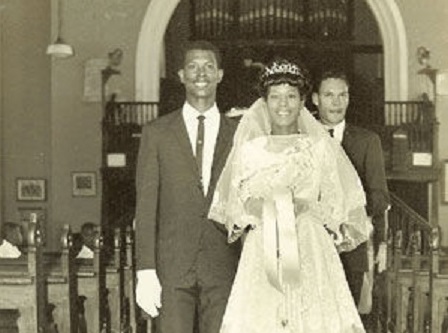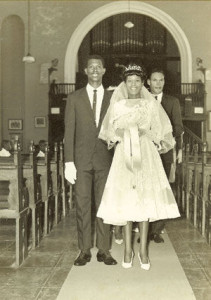
A traditional wedding in Jamaica typically involved the whole village or community where the couple lived. Relatives of the couple and members of the community all had roles in preparing for the ceremony. Today, modern couples seek help from wedding consultants or planners, but in the past, planning responsibilities were taken on by those who lived near the couple and knew them well.
Traditional weddings required elaborate preparations, including the cooking of vast amounts of food and several cakes. Cakes were carried to the wedding location by a procession of married women clothed in white dresses and head-ties. This was a solemn and silent procession during which no one spoke. The cakes themselves were covered with white lace so that the bride did not see them until the day of her wedding.

Before the ceremony, ring games were played, and people dined on the wide array of foods available. The festivities lasted until daybreak, when those in attendance would then pray for the couple before they left to prepare themselves for the wedding ceremony. If the ceremony was held in a church, it usually followed the form of an English wedding. The groom wore a new suit, and the bride wore a white dress and veil.
The wedding reception was held at the groom’s house in a special booth built specifically for the event and usually made of coconut boughs and decorated with flowers. At the reception, the wedding cake was cut, the couple was toasted, delicious foods were consumed, and everyone enjoyed a great deal of dancing. The reception typically lasted until the afternoon with everyone playing games and singing songs.
On the Sunday after the wedding, which is known as Tun T’anks Sunday, the wedding party went to church, and after services, visited the home of the bride’s parents for a second reception. This second reception was even larger than the first one, with more food and more cakes beings served. The top layer of the wedding cake was given to the minister who performed the ceremony, and the second layer went to the newlyweds.
Throughout the evening, participants made bids on the newlyweds, collecting a sum of money then given to the bride. Highlighted at the end of the evening was a dance with music provided by a fife, banjo and guitar. Quadrilles were usually danced, with one of the sets comprising the bide, groom, their parents, maid of honor and the best man. Gifts were given by everyone in attendance; in the past, these gifts were usually animals or other kinds of provisions. Following the last reception, the newly wedded couple went to their new home and usually remained there for a week. In olden times, the couple was excused from working in the fields during this time, and family members would bring them food and give them advice.
In modern times, many of these folk customs and traditions are no longer observed, and new practices have been introduced, but the old ways are still remembered fondly and respected.








